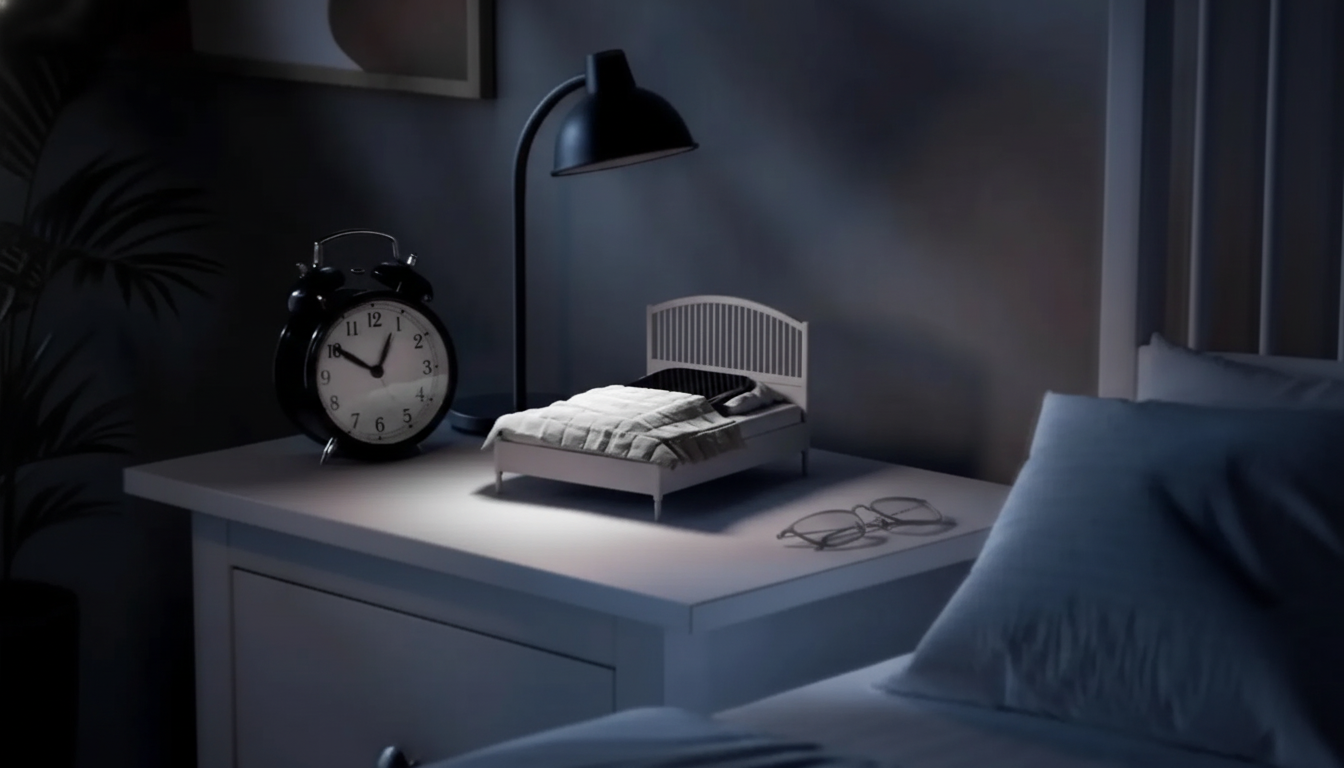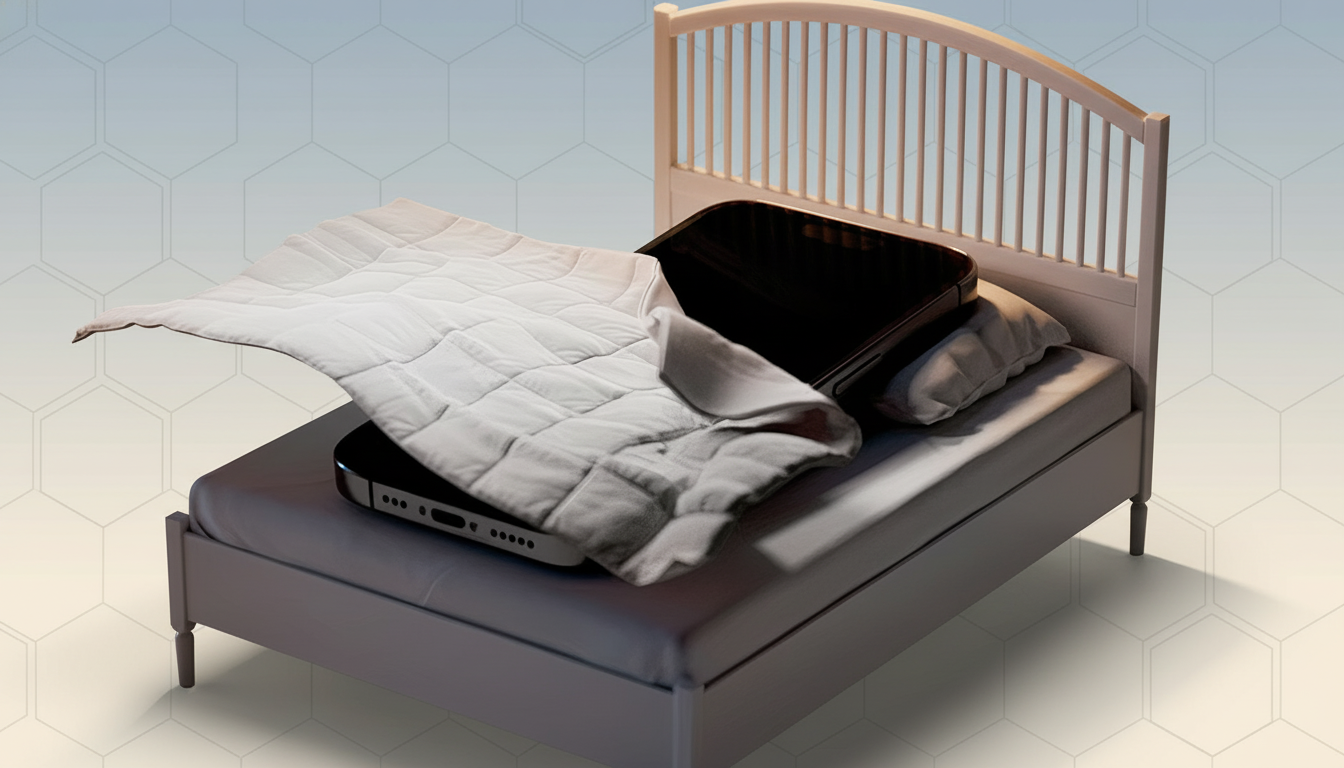There’s a new foil to those late-night scrolls, and it looks suspiciously like a bite-size bed.
Just in time for bed, IKEA has unveiled an NFC-equipped “smartphone bed,” built to coax your device into sleep mode … so you can finally go ahead and get yours. It’s a playful device designed to improve sleep, but with a serious purpose: replacing end-of-day screen time with a ritual that encourages seven hours of phone-free rest.
- How IKEA’s Tiny Bed Works, From NFC Tag to Rewards
- The Late-Night Scrolling Problem and Sleep Disruption
- A Nudge, Not Perfection: Behavioral Design at Work
- Different From Software Limits: A Physical Commitment
- What We Don’t Know Yet About IKEA’s Phone Bed Program
- The Bigger Picture on Sleep, Screens, and Small Nudges

How IKEA’s Tiny Bed Works, From NFC Tag to Rewards
Hidden under the ‘mattress’ of the mini bed (based on IKEA’s full-size frames) lies an NFC tag. You set your phone on it and — after a quick tap using the IKEA app on iOS or Android — the system silently clocks how long your device rests there. Hit seven hours or more without lifting the bolt and you log a good night; do it for seven consecutive nights and you get credit toward a reward voucher. The company posted the concept via its UAE arm, along with their trademark self-assembly.
In the United Arab Emirates, it is being sold as a promotion: free with a purchase from the Complete Sleep Collection that totals 750 AED (about $200). Get through seven nights and customers get a meal voucher worth about $27. It is simple, physical and — since it counts what really matters — more difficult to cheat than most software-only screen limits.
The Late-Night Scrolling Problem and Sleep Disruption
The stakes met by health agencies have been stark. The C.D.C. advises adults to get at least seven hours of sleep, but about a third fail to do so. Looking at blue-light devices and content that is mentally engaging before bedtime are two biggies. In the evening, using light-emitting screens suppresses melatonin and delays circadian timing while suppressing the onset of sleep and reducing alertness the following morning, according to researchers at Brigham and Women’s Hospital who are affiliated with Harvard.
There’s a behavioral layer, too. Infinite feeds and notifications are programmed to capture attention, feeding reward loops that make “just one more scroll” difficult to resist. Sleep experts like the American Academy of Sleep Medicine advocate keeping phones out of arm’s reach to reduce awakenings and cut the cue to “check just for a second.” And IKEA’s phone-bed literalizes that advice, providing your phone with a bed that doesn’t happen to be yours.

A Nudge, Not Perfection: Behavioral Design at Work
Beneath the whimsy lies some sensible behavioral design. By introducing a small amount of friction — physically parking your phone and coupling it with an immediate cue (the app confirmation) and delayed gratification (a voucher), the setup is taking cues from principles popularized by behavioral economists like Richard Thaler. It’s a commitment device with positive feedback that can turn the abstraction of good sleep practices into a nightly ritual.
Rituals are important because habits form over repetition. Studies out of University College London indicate that policy usually takes weeks to become a habit, not days, but early victories help. A one-week challenge isn’t going to rewire sleep by itself, but it can jump-start a habit that many people find difficult to sustain without such an explicit prompt.
Different From Software Limits: A Physical Commitment
Both Android’s Digital Wellbeing and Apple’s Screen Time include Bedtime modes, monochrome screens and app limits. They work when used consistently, but it’s all too easy to override on-device settings in a moment of weakness. And keeping time adds accountability if you have a physical dock that tallies nonstop time — pick up the phone and your progress stalls. It also steers clear of the trade-off of transitioning to minimalist handsets, letting you hang on to your daily driver while altering the world around it.
What We Don’t Know Yet About IKEA’s Phone Bed Program
The initiative, for now, is tied to a regional promotion. IKEA has not outlined wider availability, policy regarding data beyond the app-tracked measure of rest and whether or not this reward program will grow. But the concept makes sense for a brand that has a history of transforming lifestyle pain points into consumer-friendly products, from cable-organizing lamps to white-noise accessories.
The Bigger Picture on Sleep, Screens, and Small Nudges
It’s always the same advice from sleep experts: a wind-down routine, dim light and no screens in bed. This little bed combines that playbook with a touch of gamification that could be just the necessary nudge to stop a doomscrolling streak. If some sort of novelty-size frame helps you to get back the seven hours, it’s not just a bit of whimsy — it’s a clever scaffold for a healthier habit.

